(CLO) Firefighting aircraft are trying to extinguish raging wildfires in the Los Angeles area by dropping hundreds of thousands of liters of bright pink fire-fighting agent ahead of the fires, in an attempt to prevent the flames from spreading and destroying more residential areas.
Firefighting agencies, including Cal Fire, the US Forest Service, and the National Guard, have deployed multiple aircraft to drop fire-suppressant, a key tool in controlling the fires.
The fire retardant, according to University of Southern California professor Daniel McCurry, is a mixture of water, ammonium phosphate (a fertilizer), and iron oxide. The compound produces a bright pink color that makes it easy to identify the treated area. The compound works by reducing oxygen in the fire, slowing the rate of combustion and creating a protective coating on vegetation, preventing the fire from spreading further.
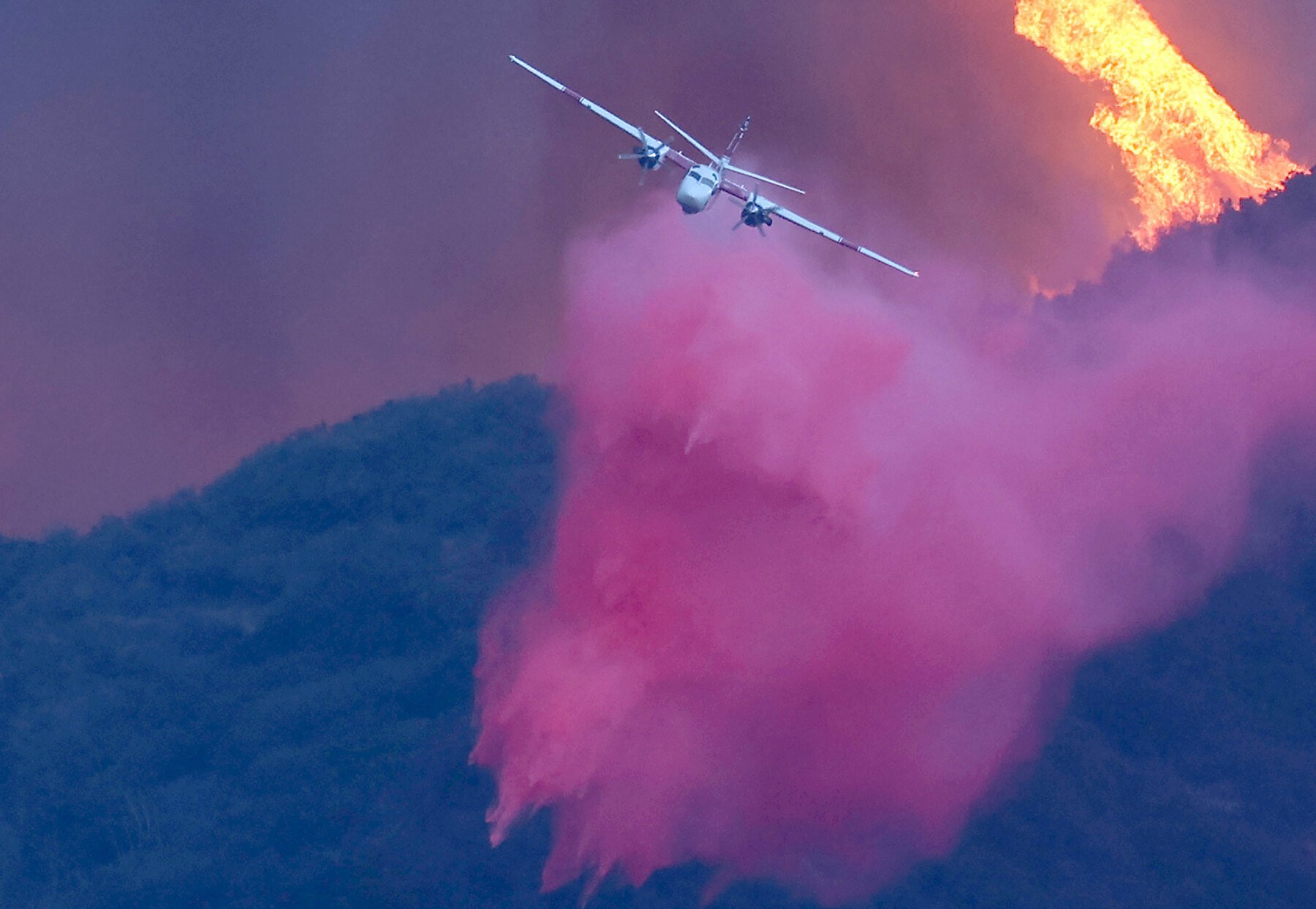
A firefighting plane drops fire retardant near the Palisades Fire in California on January 7. Photo: GI
Perimeter, a company that supplies fire suppression agents to fire departments, explains that the phosphates in the mixture change the way cellulose in plants breaks down, making them harder to ignite. This helps control the fire before ground crews get there.
Fire retardants are considered an invaluable tool in fighting wildfires, but they are not without their limitations. High winds can make flying at low altitudes – necessary to accurately drop the extinguishant – dangerous. Winds can also disperse the extinguishant before it reaches the ground, reducing its effectiveness.
Additionally, the U.S. Forest Service prohibits the use of fire retardants in areas near waterways and endangered species habitats unless there is a life-threatening situation. The reason is that fire retardants can negatively affect wildlife, especially fish and aquatic life.
While considered safe for humans, fire extinguishers have raised concerns about their long-term impact on the environment. Professor McCurry’s research has shown that some commonly used fire extinguishers may contain heavy metals such as chromium and cadmium – which could contaminate water supplies after wildfires have been extinguished.
He warned that these metals could cause unwanted changes in the ecosystem if not tightly controlled.
Perimeter countered that the study was based on an older formula no longer used in California and insisted that current products meet strict safety standards. The company also stressed that the heavy metals in the fire retardant are only natural traces from ammonium phosphate fertilizer.
The use of fire extinguishing agents is imperative to combat increasingly devastating wildfires, which pose a danger not only to property but also to human health.
Wildfire smoke contains toxic microscopic particles that can penetrate deep into the lungs and bloodstream, causing respiratory and cardiovascular problems and even affecting brain health. A study by the Alzheimer's Association found that wildfire smoke is more harmful to the brain than other types of air pollution, increasing the risk of dementia.
Edward Goldberg, vice president of Perimeter, said the use of fire retardants is the best way to save lives, protect communities and reduce the risk of wildfires. Professor McCurry agreed, although he stressed that more research is needed to better understand the environmental and health impacts of fire retardants.
“If a wildfire was going to happen near my home, I would still want planes dropping a lot of fire retardant to protect my family and my community,” McCurry said.
Hoai Phuong (according to AP, NYT, The Star)
Source: https://www.congluan.vn/chat-chua-chay-mau-hong-trong-chay-rung-los-angeles-la-gi-co-nguy-hai-khong-post330368.html





![[Photo] Cutting hills to make way for people to travel on route 14E that suffered landslides](https://vphoto.vietnam.vn/thumb/1200x675/vietnam/resource/IMAGE/2025/11/08/1762599969318_ndo_br_thiet-ke-chua-co-ten-2025-11-08t154639923-png.webp)


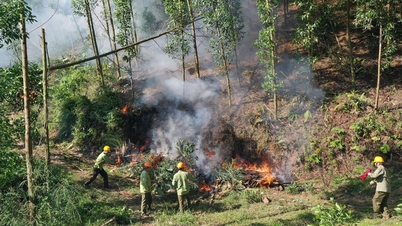

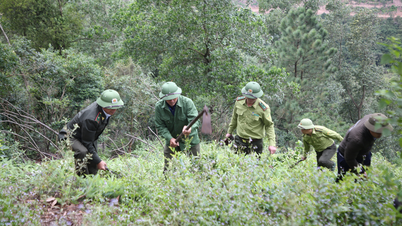
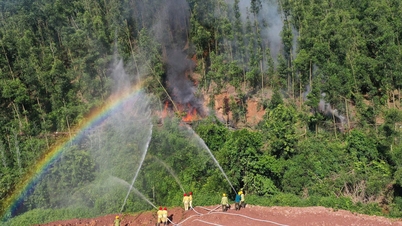
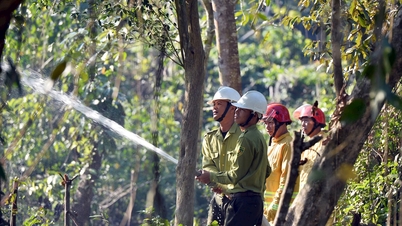

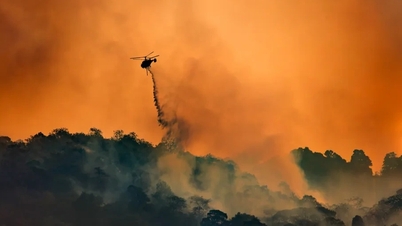

















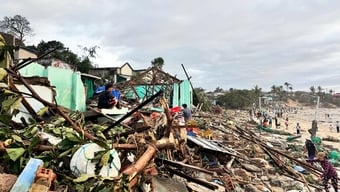






![[Photo] "Ship graveyard" on Xuan Dai Bay](https://vphoto.vietnam.vn/thumb/1200x675/vietnam/resource/IMAGE/2025/11/08/1762577162805_ndo_br_tb5-jpg.webp)







![[Video] Hue Monuments reopen to welcome visitors](https://vphoto.vietnam.vn/thumb/402x226/vietnam/resource/IMAGE/2025/11/05/1762301089171_dung01-05-43-09still013-jpg.webp)
































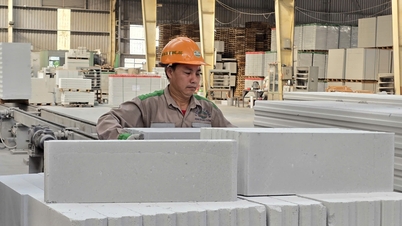





























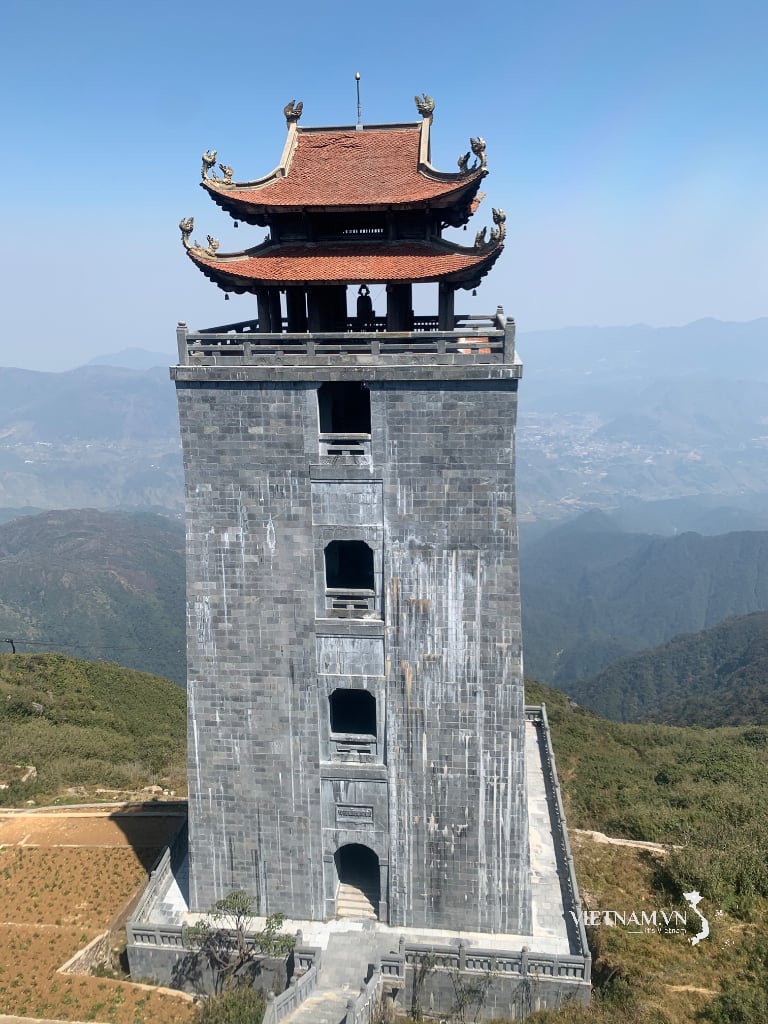

Comment (0)